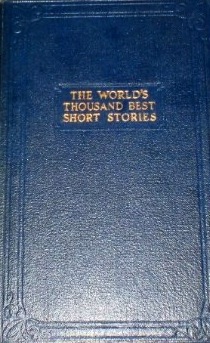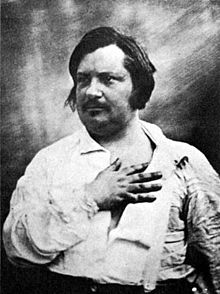
photo by Cam Incoll
by Mike Smith
I recently stumbled – I choose the verb carefully – upon a copy of Volumes Nine & Ten of the Hammerton anthology of The World’s Thousand Best Short Stories. This bi-volume contains the best of English and Scottish stories, throughout history. Instantly hooked, I decided to track down the other eighteen volumes to complete the set and to cover the rest of the world. Now I have so much to read and so much to tell…
The selection of tales within the Thousand Best Stories was made by ‘An International Board of Eminent Critics’. This band of stalwarts, some of whom have provided stories, as well as translations of stories, also gives us a general introduction and overview to each volume, plus potted (some more than others) appraisals of the individual contributors and their stories. It’s a bold, self-confident anthology, with a tantalising glimpse here and there, of stories that have been excluded, as being too salacious, for example.
In the introductory notes to each volume, we are told that ‘the inclusion of a series of stories of the War became possible when the War itself ruled out all modern German works’. The war in question is World War I, and not only are modern German works excluded, but also works from the quarter century before; Leopold Sacher-Masoch (1835-1895) provides the last German story, in a section called the ‘Old German Storytellers’. This statement about the War reminds us that narratives, stories and anthologies all have their context. The editor goes on to note that this lack of German works from the era ‘will be surely approved’. Within a generation of what was then the greatest disaster the European people had experienced since the Thirty Years’ War (the ‘Great War’ of the 1600s), it must have been difficult, and I suspect near impossible, to make any sort of rational decision about which stories to include and exclude, and so it is only the older German writers that are covered.
Aside from the political judgements and dated opinions, these introductory essays are also full of ideas and insights that are helpful, both to the reader and to the would-be writer. In one editorial note, it is stated that ‘a short story may be a mere anecdote of three hundred words, or a work of ten or fifteen  thousand’. I like that reference to a ‘mere anecdote’, especially when it is contrasted with the word ‘work’ for the longer stories. Flash fiction, I think, is being derisively cited here, in its earlier form. The editorial note also admits its own ‘arbitrary lines’ in the case of selection, as well as there being ‘exceptions’ with regard to length, and admitting ‘problems’ when assigning ‘country’.
thousand’. I like that reference to a ‘mere anecdote’, especially when it is contrasted with the word ‘work’ for the longer stories. Flash fiction, I think, is being derisively cited here, in its earlier form. The editorial note also admits its own ‘arbitrary lines’ in the case of selection, as well as there being ‘exceptions’ with regard to length, and admitting ‘problems’ when assigning ‘country’.
As well as Scottish, British and ‘Old’ German writers, there are volumes including Italian, French, Spanish, American, Russian, Irish and Scandinavian authors. The broad sweep of history, as well as that of geography, is covered, with the earliest stories in Volume One going back to ancient times.
I confess to a great sense of excitement when I stumbled over that first volume in the second-hand bookshop at the Mill on the Fleet, Scotland (a shop where every shelf and floorspace is double-banked with books). At the beginning of the twenty-first century we know so much about the writers of the past, yet we read so little of their works. Some of the stories in the Thousand Best Stories are still well-known and still anthologised regularly. Some of the authors are still household names. But many, too, are long forgotten and it is amongst these that I have found the greatest reading pleasure.
As I plunged into stories unknown to me – from the Renaissance, from the Medieval and Ancient periods, from the Eighteenth, Seventeenth and Sixteenth centuries, as well as the 1800s – I was confronted with stories that seemed uncannily modern. ‘The Talkative Tortoise’, attributed to The Buddha, is an example, and reminded me of two of my own stories. Here were writers doing what I am trying to do, and what my contemporaries appear to be doing: creating new tales that retain the symbolic detachment of an old myth, but which demonstrate contemporary perceptions. The tortoise, like many a politician or public figure, past or present, doesn’t know when to keep his moouth shut, and later suffers for his outspokenness.
Leavis wrote that writers fall into two categories: those who illustrate, and those who develop a tradition. I confess that, previously, I have not been impressed with writers who have imitated their predecessors. However, in the Thousand Best Stories I have found all sorts of precedents. So many of the stories, though set in the past, could be equally played out in the present moment. The wonderful ‘Putois’, by Anatole France, collected in Volume Five, tells of a figure created to validate an excuse – like Wilde’s Bunbury – but who goes on to develop a personality and presence that far surpasses the intention of his creator. The story puts an old spin on the phrase ‘identity theft’.
You must understand that Putois was the most familiar figure in my childhood and in that of your Aunt Zoe. In the house of your grandfather Bergeret we constantly spoke of Putois. Each believed that he had seen him.
I’m about two thirds of the way through the volumes and have found more than a handful of favourites to which I have, already, gone back to read again. In particular, some of the French medieval stories have caught my interest. They are worldy wise, but not world weary, and with a humour that is less ironic, bubbling with a joie de vivre. I’ve even started trying to write modern equivalents of them, attempting to capture those same insights into the way we are (and must have been previously) through narratives of contemporary events.
 Honoré de Balzac is a writer I had heard of before and I found nine of his stories within the later parts of the French volume, including ‘A Passion in the Desert’. This story is not what I expected… A lost Legionaire is ‘captured’ by a big cat, with which he develops an almost intimate relationship. It is a wicked extended metaphor for the development and disintegration of human love affairs. There is also the creepy story ‘La Grande Breteche’, which I think might have informed the movie Blanche – both tales involving lovers who are walled up in the bedrooms of their paramours. It certainly inspired me, with a little help from some snippets of gossip, to write a creepy story too. Someone I hadn’t heard of in this volume was Bonaventure des Perriers, who died in 1644. His story ‘Blondeau the Cobbler’ made me laugh out loud, as the eponymous Cobbler is plagued by a copy-cat monkey, to whom he gives a fatal lesson. It was the darkness of it that made me laugh – animal rights activists would be horrified – and I was inspired to write my own version. In my story though, the copy-cat who gets a final comeuppance is safely made into a human being.
Honoré de Balzac is a writer I had heard of before and I found nine of his stories within the later parts of the French volume, including ‘A Passion in the Desert’. This story is not what I expected… A lost Legionaire is ‘captured’ by a big cat, with which he develops an almost intimate relationship. It is a wicked extended metaphor for the development and disintegration of human love affairs. There is also the creepy story ‘La Grande Breteche’, which I think might have informed the movie Blanche – both tales involving lovers who are walled up in the bedrooms of their paramours. It certainly inspired me, with a little help from some snippets of gossip, to write a creepy story too. Someone I hadn’t heard of in this volume was Bonaventure des Perriers, who died in 1644. His story ‘Blondeau the Cobbler’ made me laugh out loud, as the eponymous Cobbler is plagued by a copy-cat monkey, to whom he gives a fatal lesson. It was the darkness of it that made me laugh – animal rights activists would be horrified – and I was inspired to write my own version. In my story though, the copy-cat who gets a final comeuppance is safely made into a human being.
In total, there are four French and Belgian volumes, which include stories from Margaret de Navarre, through Diderot, Stendahl, Prosper Merime and Dumas, to Anatole France and Guy de Maupassant, who is represented by no less than fourteen tales. There are three volumes of American writers, with Poe, Hawthorne, Irving, O. Henry, Bierce and Henry James, among others, illustrating the earlier flowering of the short form in the States. The Russians are well served in Volumes Twelve & Thirteen, with Gogol, Chekhov and Trotsky on show. These greats run alongside stories from writers I hadn’t heard of, including Nicolai Schedrin’s ‘Two Little Moujiks’ and ‘The Self-Sacrificing Rabbit’, which both blew me away. Schedrin’s political satire is uncompromising: the rabbit is insanely trusting, and so, I suspect, on occasion are we. The little moujiks too, who put their trust in God, but who have to die to get their case heard by him. If that isn’t contemporary, what is? Finally, among the Scandinavian writers, who were all unknown to me, I found the wonderful ‘Secret of the Wood’ by Gustaf af Geijerstam, which, like ‘The Talkative Tortoise’, seemed very modern in its denouement, and in its concerns; it deals with, what is in effect, an assisted suicide.
The structures within these stories are often instructive too, giving lessons on McKee’s ‘inciting incidents for action’, and on the ‘obligatory scene’. That tortoise, for example, suffers his fate early on, in what is quite a short story, and the rest is about how the event is interpreted. But des Perrier’s copy-cat monkey doesn’t even appear in his tale until halfway through, as the first part of the story concentrates on an entirely different set of events that show us what sort of person our Blondeau is. We can find examples of how to fold or frame our stories today from these venerable stories, just as well as we can from any modern tutorial.
After reading through this massive collection, nearly one hundred years after its publication, I felt as though I had looked out over the landscape of the short story genre, in both time and space, and I found it exhilarating and inspiring. The nearest modern equivalent to this type of anthology I can think of are those bucket-lists one sees in newspapers and periodicals from time to time – the 100 Best This and Thats to Do, See or Possess Before You Die.
These days, when it’s a ‘100 Best Books’ list, it’s generally accepted that all the books are readily available now, many recently reprinted for the nth time. It was therefore refreshing to see that there are stories in these volumes, not to mention authors, that might never be published again. Yet they are not necessarily bad stories, nor poor writers; they have simply been forgotten. Indeed, there may still be some of the World’s Thousand Best Short Stories hidden in these pages.

